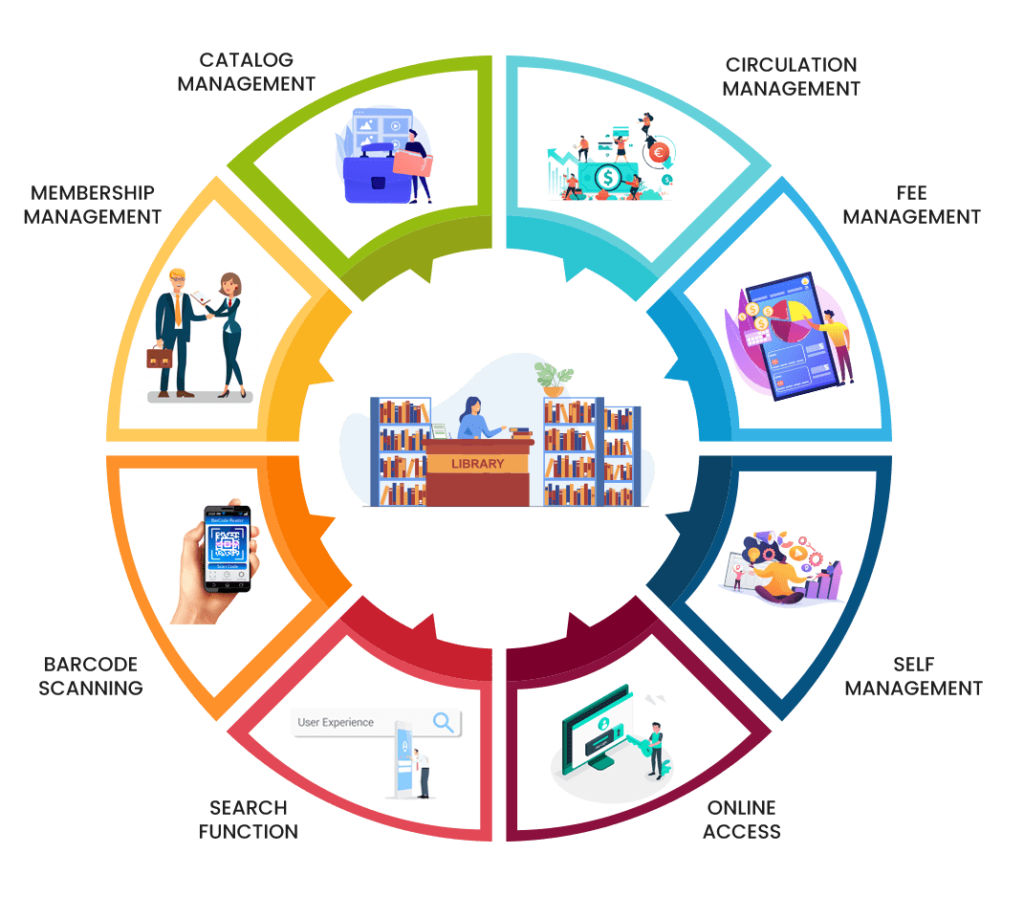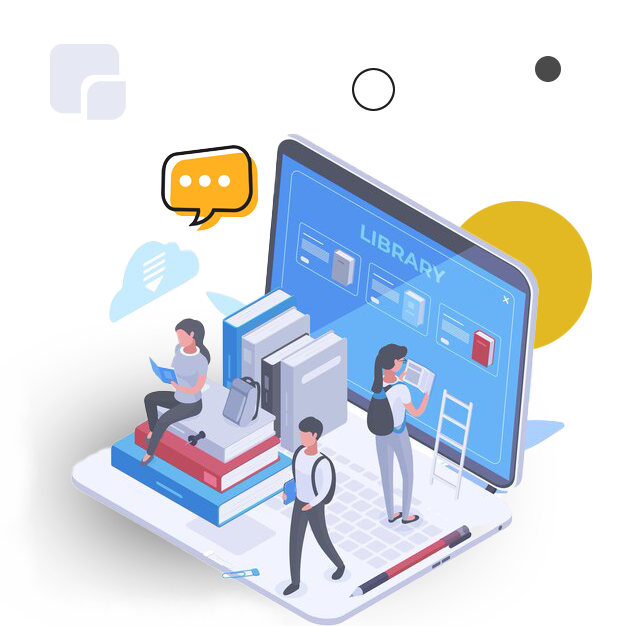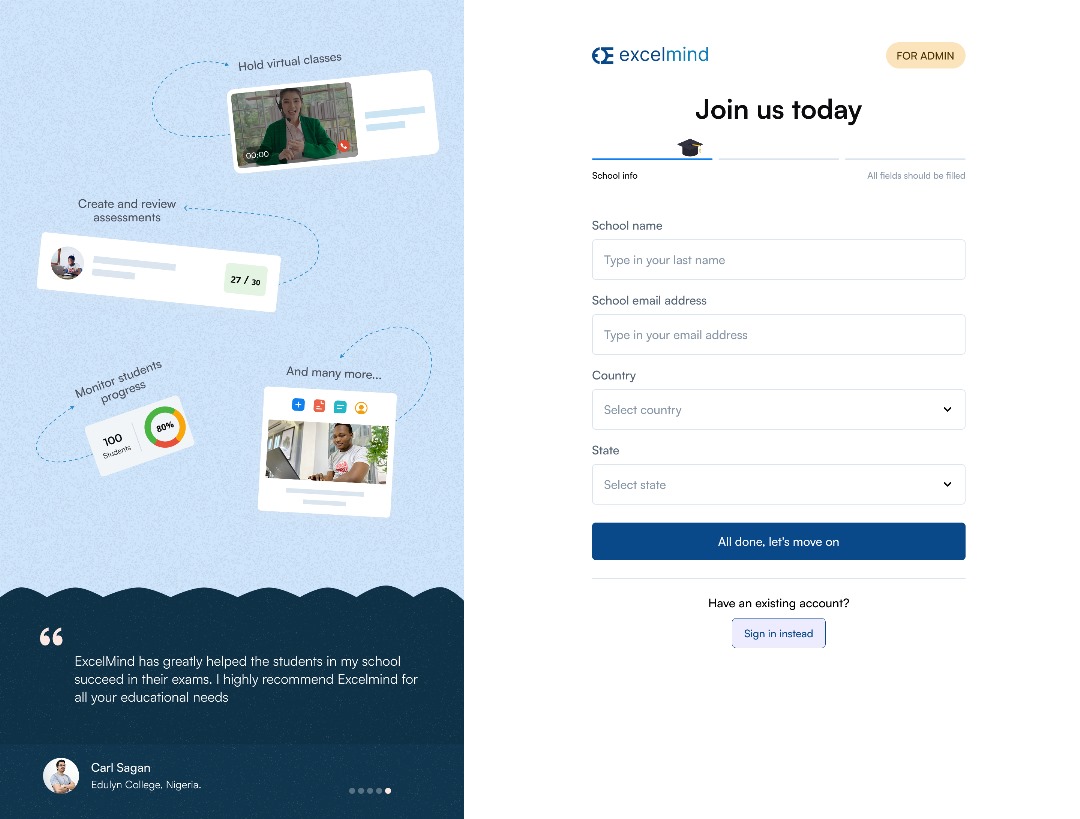Physical Address
304 North Cardinal St.
Dorchester Center, MA 02124

Managing a school library can be a daunting task, especially when relying on outdated systems or manual tracking. As a principal, school owner, or educator, you know how important it is to ensure that students have access to the right resources at the right time.
But traditional library systems can be inefficient, prone to errors, and waste valuable time that could be better spent on engaging students and improving their educational experience.
This is where e-library software comes in. The best e-library software helps automate and streamline library management, making it more efficient, accurate, and accessible. It saves time, reduces errors, and most importantly, improves the overall library experience for both students and staff.

In this guide, we’ll look at why ExcelMind CRM is the best e-library software solution for your school. We’ll compare it with other options, walk through its features, and explain how it can change your school’s library management.
READ: Student Performance Tracking Software for Educators to Succeed

Traditional library systems, whether paper-based or using outdated digital tools, often create more problems than they solve. Here are some of the key challenges faced by schools:
These issues can hinder the learning experience and make library management more difficult than it needs to be.
The best e-library software should solve these problems and offer a seamless, efficient, and intuitive experience. This is exactly what ExcelMind CRM delivers.

Here’s a detailed look at how ExcelMind CRM stands out from the crowd and why it’s the number one choice for school libraries:
One of the core benefits of ExcelMind CRM is its ability to centralize all library data into one easy-to-use platform. No more flipping through paper logs or dealing with disorganized digital records. With ExcelMind CRM, you can:
This centralized system makes it easy to stay organized and ensures that no book or resource slips through the cracks.
Managing the check-in and check-out process can be time-consuming, especially in a busy school library. ExcelMind CRM automates this process, allowing students to check in and out books with just a few clicks.
By automating these tasks, ExcelMind CRM frees up librarians’ time for other important duties, like assisting students and managing resources.
With ExcelMind CRM, you don’t need expensive hardware or complex setups. It’s a cloud-based system, meaning you can access it from any device, anytime, and anywhere. This is especially useful for schools with multiple locations or for administrators who need to monitor library usage remotely.
Cloud-based access also ensures that your library data is always up-to-date and accessible, even when you’re off-campus.
One of the biggest advantages of ExcelMind CRM is its ability to provide real-time data. School administrators can track everything from:
This real-time data helps you make informed decisions about resource management, ensuring that your library is always running smoothly.
ExcelMind CRM is designed with ease of use in mind. You don’t need to be a tech expert to navigate the platform. The intuitive interface makes it easy for school librarians, teachers, and even students to access the library’s resources, check out books, and manage their accounts.
Whether you’re a school administrator, librarian, or teacher, ExcelMind CRM provides a simple and efficient user experience.
Whether you run a small school with a few hundred students or a large institution with thousands, ExcelMind CRM can scale to meet your needs. The software is affordable, with flexible pricing plans to suit schools of all sizes. This means you get a top-tier library management system without breaking the bank.
There are several e-library management systems available, but ExcelMind CRM is unique because it addresses both the administrative needs of schools and the ease of use for students. Here’s how ExcelMind CRM compares to other popular software options:
| Feature | ExcelMind CRM | Competitor 1 | Competitor 2 |
| Cloud-Based | Yes | No | Yes |
| Automated Check-Out System | Yes | Yes | No |
| Real-Time Tracking | Yes | No | Yes |
| User-Friendly Interface | Yes | No | Yes |
| Inventory Management | Yes | Yes | No |
| Cost-Effective | Yes | Expensive | Yes |
| Scalable | Yes | Limited | Yes |
| Comprehensive Support | Yes | Limited | Yes |
As you can see, ExcelMind CRM offers all the features that are essential for modern library management, with the added benefits of cloud-based access and affordability.
Let’s take a look at some real-world examples of how schools can benefit from ExcelMind CRM:
A small private school can be struggling with its outdated library system. Librarians will spend hours tracking books and checking them in and out manually. After implementing ExcelMind CRM, they will notice immediate improvements:
A large school district with several schools might face difficulties with inventory management and access to resources. They should adopt ExcelMind CRM for its scalability and ease of use across multiple campuses:
ALSO: Best LMS platform for elementary schools: Bringing Joy to Classrooms
Choosing the right e-library software can make a huge difference in the efficiency and effectiveness of your school library. ExcelMind CRM stands out as the best solution for schools of all sizes, offering centralized management, real-time tracking, and an easy-to-use interface.
It’s affordable, scalable, and designed to simplify library management while enhancing student learning experiences. If you’re ready to modernize your school’s library system and take the stress out of managing books, ExcelMind CRM is the solution you’ve been looking for.
Transform your school library today with ExcelMind CRM. Visit ExcelMind CRM to schedule a free demo and see how easy and affordable library management can be. Don’t wait, get started now and improve your library’s efficiency in just a few clicks.
The best e-library depends on your needs, but ExcelMind CRM stands out as one of the top choices for schools. It offers centralised management, cloud-based access, real-time tracking, and a user-friendly interface.
It’s cost-effective, scalable, and comes with comprehensive support, making it ideal for schools of all sizes looking to streamline library operations and improve student access to resources.
The best digital library app is ExcelMind CRM, especially for educational institutions. It provides seamless book tracking, automated check-ins and check-outs, real-time inventory management, and cloud-based access.
Its intuitive interface and customizable features make it ideal for schools and libraries, allowing students and staff to easily manage and access resources from anywhere. It’s also scalable and affordable, making it a top choice for institutions of all sizes.
The “best” library in Nigeria depends on your needs, but some of the top libraries include:
National Library of Nigeria (NLN) – The central library of the country, offering millions of resources and accessible in various states across Nigeria.
Kashim Ibrahim Library, Ahmadu Bello University – One of the largest academic libraries in Africa, supporting extensive research.
Kenneth Dike Library, University of Ibadan – Known for its vast collection, including books, theses, and journals, serving Nigeria’s premier university.
Lagos State Library Board – Serving public libraries across Lagos, offering community-based resources.
University of Lagos Library – Provides access to a vast range of academic resources and has an online catalogue system.
Each of these libraries stands out for different reasons, whether it’s size, resources, accessibility, or specialization. The best one for you depends on what you’re looking for in a library.
The terms digital library and e-library are often used interchangeably, but there are subtle differences:
Digital Library:
Refers to a collection of digital resources (books, journals, videos, etc.) stored electronically, and it can include both online and offline materials.
A digital library is typically organized using digital systems that allow easy searching, accessing, and managing of content.
It may store resources in various digital formats like PDFs, audio files, images, or even databases.
E-Library:
An e-library is essentially a subset of a digital library, but it focuses primarily on online access to digital content.
E-libraries are usually web-based platforms where users can access resources directly from the internet. It often provides services like book lending, cataloguing, and resource sharing online.
The term “e-library” typically emphasizes the convenience of accessing materials remotely, often used in educational settings.
In essence, all e-libraries are digital libraries, but not all digital libraries are necessarily e-libraries. A digital library may include offline materials or internal databases, whereas an e-library is designed specifically for online access.
The Internet Archive is widely recognized as the world’s largest digital library. Founded in 1996 by Brewster Kahle, it operates as a non-profit organization dedicated to providing universal access to all knowledge.
The Internet Archive offers a vast collection of digitized materials, including over 42 million books and texts, 15 million audio recordings, 14 million videos, and 5 million images. Additionally, it houses the Wayback Machine, a service that archives and provides access to billions of web pages, preserving the history of the internet.
Another notable digital library is the World Digital Library (WDL), an international initiative operated by UNESCO and the United States Library of Congress. Launched in 2009, the WDL aims to promote international and intercultural understanding by providing access to significant primary materials from cultures around the world. It offers a selection of manuscripts, maps, rare books, and other cultural documents.